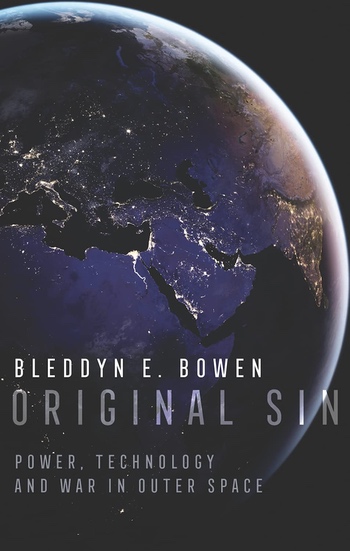Review: Original Sinby Jeff Foust
|
| “Space is not a new or emerging military and security issue. Earth orbit has always been a place of military exploitation and economic competition since satellites began flying above the atmosphere,” writes Bowen. |
Bowen has three major themes to the book. One is that space technologies “have not been developed for the benefit of all humankind,” the original sin of spaceflight. This should be of little surprise to readers, given the role space played in the Cold War competition between the United States and the Soviet Union, which itself was based on rocket technology developed in Nazi Germany at tremendous human cost. The military has always been in the driver’s seat, he argues, even as those military applications expanded from primarily strategic roles linked to nuclear arsenals—reconnaissance, command and control, early warning—to broader, more conventional support of military operations.
The second argument is that the first is not limited to the US and former Soviet Union. Bowen examines the rise of space capabilities among several other powers, including China, Europe, India, and Japan, and finds that military issues played a leading role in the development of space capabilities. “The original sin of spaceflight does not just taint the dreams of Americans and Russians in space, but every major space power in the twenty-first century,” he writes.
The third, and perhaps most intriguing, argument takes aim at the longstanding belief of space as the “high ground” or even “ultimate high ground” for warfare. Bowen dismisses that concept—which dates back at least to 1958, in comments by then-Sen. Lyndon B. Johnson—as “vacuous” and one that “leads to mechanistic and limited strategic thought.” A better model, he argues, is one of littoral combat, seeing Earth orbit as a “cosmic coastline” where satellites operate in support of activities on Earth, while also being subject to attack from the ground as well as space (he is sharply critical of those who express “more apparent discomfort at the prospect of destroying expensive machines in space than killing people on Earth.”)
Bowen writes that the book is intended both for those in the space industry who want to better understand policy (or “astropolitics,” as he calls space-related policy) and those in the broader policy and international relations fields seeking to understand how space fits in. For those in the former category, many of the arguments may seem familiar, but are laid out in greater detail or expressed in novel ways, like the littoral model for space power versus the high ground. Even as the number of satellites grows, and capabilities expand to more nations—like Australia and its interest in anti-satellite capabilities—the original sin of spaceflight persists.
Note: we are using a new commenting system, which may require you to create a new account.
